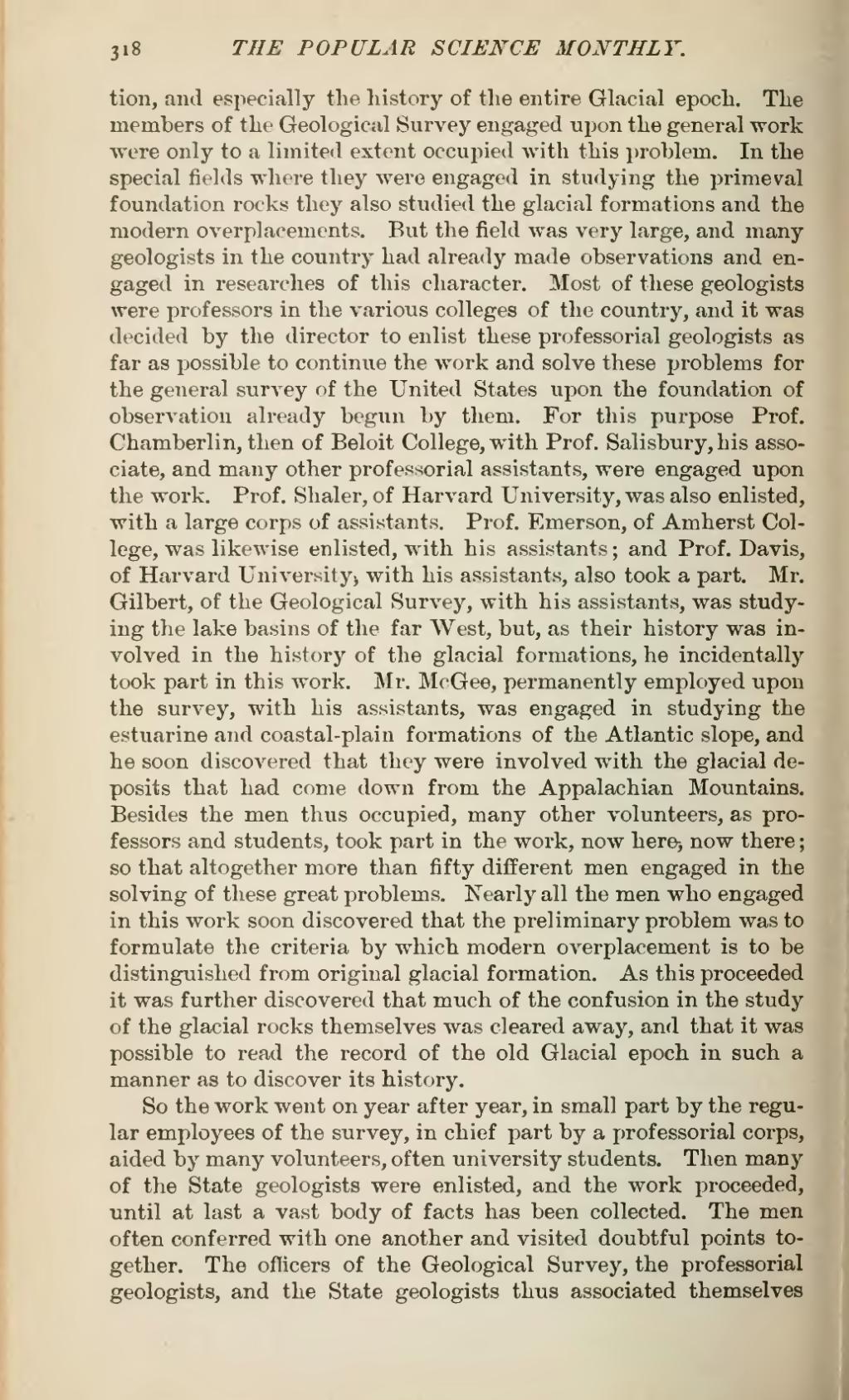tion, and especially the history of the entire Glacial epoch. The members of the Geological Survey engaged upon the general work were only to a limited extent occupied with this problem. In the special fields where they were engaged in studying the primeval foundation rocks they also studied the glacial formations and the modern overplacements. But the field was very large, and many geologists in the country had already made observations and engaged in researches of this character. Most of these geologists were professors in the various colleges of the country, and it was decided by the director to enlist these professorial geologists as far as possible to continue the work and solve these problems for the general survey of the United States upon the foundation of observation already begun by them. For this purpose Prof. Chamberlin, then of Beloit College, with Prof. Salisbury, his associate, and many other professorial assistants, were engaged upon the work. Prof. Shaler, of Harvard University, was also enlisted, with a large corps of assistants. Prof. Emerson, of Amherst College, was likewise enlisted, with his assistants; and Prof. Davis, of Harvard University, with his assistants, also took a part. Mr. Gilbert, of the Geological Survey, with his assistants, was studying the lake basins of the far West, but, as their history was involved in the history of the glacial formations, he incidentally took part in this work. Mr. McGee, permanently employed upon the survey, with his assistants, was engaged in studying the estuarine and coastal-plain formations of the Atlantic slope, and he soon discovered that they were involved with the glacial deposits that had come down from the Appalachian Mountains. Besides the men thus occupied, many other volunteers, as professors and students, took part in the work, now here-, now there; so that altogether more than fifty different men engaged in the solving of these great problems. Nearly all the men who engaged in this work soon discovered that the preliminary problem was to formulate the criteria by which modern overplacement is to be distinguished from original glacial formation. As this proceeded it was further discovered that much of the confusion in the study of the glacial rocks themselves was cleared away, and that it was possible to read the record of the old Glacial epoch in such a manner as to discover its history.
So the work went on year after year, in small part by the regular employees of the survey, in chief part by a professorial corps, aided by many volunteers, often university students. Then many of the State geologists were enlisted, and the work proceeded, until at last a vast body of facts has been collected. The men often conferred with one another and visited doubtful points together. The officers of the Geological Survey, the professorial geologists, and the State geologists thus associated themselves
